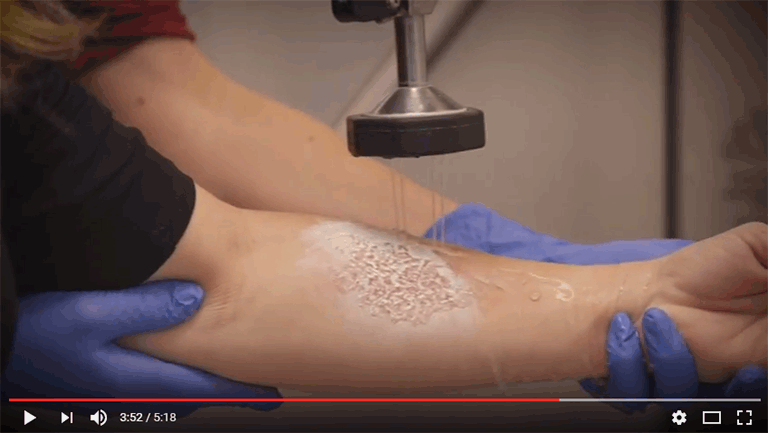Treating chemical burns

Are chemicals used in your workplace? Mayo Clinic notes that chemical burns can be caused by a variety of substances, including strong acids, drain cleaners, paint thinners and gasoline.
A worker who receives a severe chemical burn may go into shock – a life-threatening condition that requires emergency medical care. Signs of shock include fainting, a pale complexion and very shallow breathing.
Source: National Safety Council's "First Aid, CPR & AED" course. Learn more about NSC first aid and CPR training – including online and classroom training for learners, and courses and materials for instructors. © 2015 National Safety Council
According to Mayo Clinic, other reasons to seek medical care for a chemical burn include the following:
- The burn penetrated the first layer of skin.
- The burn area is more than 3 inches in diameter.
- The burn “encircles a limb or involves the eyes, hands, feet, face, groin or buttocks, or a major joint.”
If you determine that medical attention is needed, bring the name of the chemical or its container with you.
Chemical burns can be tricky. Sometimes you may not realize what caused a burn because symptoms develop hours after exposure. However, if you immediately recognize that you have suffered a mild chemical burn, Mayo Clinic recommends you take the following steps:
- Get the chemical off of you. For dry chemicals, put on gloves and brush off any material with a towel or similar item.
- Take off any contaminated clothing or jewelry to help prevent further injury.
- Immediately rinse the burn area by running a gentle but steady stream of cool water over the affected area for at least 10 minutes. As you clean yourself, be sure to protect your eyes.
- Apply a loose gauze or bandage to the affected area.
- Take a pain reliever as needed, such as ibuprofen, acetaminophen or naproxen.
- Check with your health care provider to see if you should receive a tetanus shot or booster. Medical experts recommend getting a tetanus shot every 10 years.
Post a comment to this article
Safety+Health welcomes comments that promote respectful dialogue. Please stay on topic. Comments that contain personal attacks, profanity or abusive language – or those aggressively promoting products or services – will be removed. We reserve the right to determine which comments violate our comment policy. (Anonymous comments are welcome; merely skip the “name” field in the comment box. An email address is required but will not be included with your comment.)

